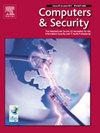基于混合元启发式动态优化算法的网络入侵特征选择方法
IF 4.8
2区 计算机科学
Q1 COMPUTER SCIENCE, INFORMATION SYSTEMS
引用次数: 0
摘要
随着网络攻击的日益频繁,确保网络入侵检测系统的有效性对网络安全至关重要。混合元启发式特征选择方法在处理高维数据时,存在初始种群质量差、收敛速度慢、容易陷入局部最优的问题。这些问题降低了网络入侵检测的效率和准确性。为了解决这些问题,提出了一种混合元启发式特征选择方法HMDOA。该方法通过优化特征选择过程,提高了检测效率和准确性。在种群初始化阶段,引入增强的种群生成机制,增加特征空间分布中初始解的多样性,提高所选特征子集的质量。在特征评估阶段,引入自适应加权参数,加快收敛速度,提高特征选择效率。此外,采用动态策略集成动态搜索机制,有效防止局部优化。利用3个公共网络入侵检测数据集——nsl - kdd、CIC_MalMem_2022和rt_iot2022来评估HMDOA方法的性能。然后将其性能与其他六种元启发式算法进行比较。实验结果表明,该方法具有更高的特征选择效率、更快的收敛速度和更高的解质量。HMDOA方法显著提高了网络流量特征选择的效果,但该算法在噪声和数据异常背景下的鲁棒性有待未来进一步探索。本文章由计算机程序翻译,如有差异,请以英文原文为准。
Feature selection method for network intrusion based on hybrid meta-heuristic dynamic optimization algorithm
As network attacks become increasingly frequent, ensuring the effectiveness of network intrusion detection systems remains critical to network security. Hybrid metaheuristic-based feature selection methods suffer from poor initial population quality, slow convergence speed, and a tendency to fall into local optimality when processing high-dimensional data. These issues reduce the efficiency and accuracy of network intrusion detection. To address these challenges, a hybrid metaheuristic feature selection method, HMDOA, is proposed. This method enhances detection efficiency and accuracy by optimizing the feature selection process. In the population initialization stage, an enhanced population generation mechanism is introduced to increase the diversity of initial solutions in the feature space distribution and improve the quality of selected feature subsets. During the feature evaluation stage, an adaptive weighting parameter is introduced to accelerate convergence and enhance feature selection efficiency. Additionally, dynamic search mechanisms are integrated using a dynamic strategy to prevent local optimization effectively. Three public network intrusion detection datasets—NSL-KDD, CIC_MalMem_2022, and RT_IOT2022—are used to evaluate the performance of the HMDOA method. Its performance is then compared with six other metaheuristic algorithms. Experimental results indicate that the HMDOA method achieves higher feature selection efficiency, faster convergence speed, and higher-quality solutions. The HMDOA method significantly improves the effect of network traffic feature selection, but the robustness of the algorithm under the background of noise and data anomalies needs to be further explored in the future.
求助全文
通过发布文献求助,成功后即可免费获取论文全文。
去求助
来源期刊

Computers & Security
工程技术-计算机:信息系统
CiteScore
12.40
自引率
7.10%
发文量
365
审稿时长
10.7 months
期刊介绍:
Computers & Security is the most respected technical journal in the IT security field. With its high-profile editorial board and informative regular features and columns, the journal is essential reading for IT security professionals around the world.
Computers & Security provides you with a unique blend of leading edge research and sound practical management advice. It is aimed at the professional involved with computer security, audit, control and data integrity in all sectors - industry, commerce and academia. Recognized worldwide as THE primary source of reference for applied research and technical expertise it is your first step to fully secure systems.
 求助内容:
求助内容: 应助结果提醒方式:
应助结果提醒方式:


